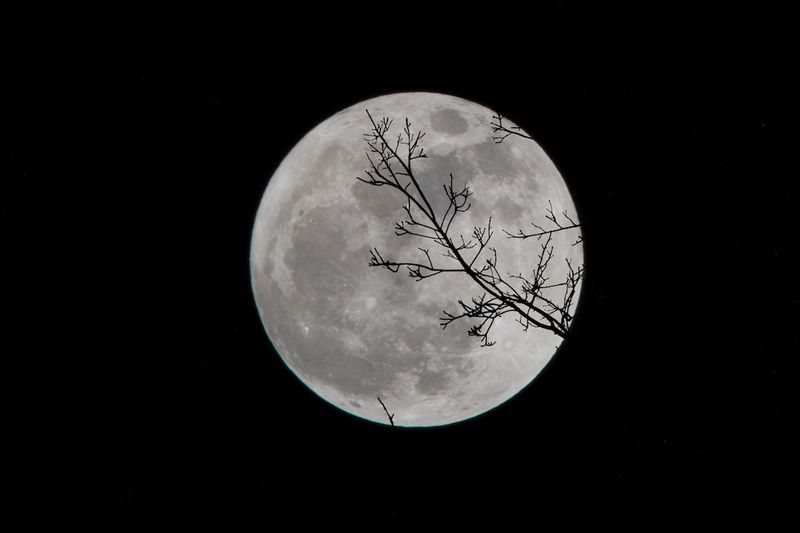Partial Lunar Eclipse: A Celestial Event Worth Watching
by
Hot on the heels of the spectacular annular eclipse witnessed across America on 14 October, skygazers in the UK, Africa, Asia, and Europe are in for another celestial treat with a partial lunar eclipse set to occur. Unlike the recent ‘ring of fire’, this event will be visible over a much wider geographical area. In this report, we will delve into the details of the eclipse, including the timings, visibility, and the visual spectacle it offers.
When and Where to View the Partial Lunar Eclipse
The partial lunar eclipse will take place on 28 October 2023. In the UK, the eclipse will begin at 8:35pm, with the maximum extent occurring at 9:14pm. The eclipse will end at 9:52pm. This event will be visible across the UK, Europe, Africa, western Asia, and western parts of Australia. Unfortunately, the eclipse will not be visible in the US. During the eclipse, the Moon will be in the constellation Aries.
What to Expect and How to View
Dr Minjae Kim from the University of Warwick explains that only 6% of the moon’s surface will undergo obscuration at the height of the eclipse, making the visual spectacle relatively understated. However, meticulous timing is crucial for capturing the event. Unlike a solar eclipse, it is safe to look directly at the Moon during a lunar eclipse, as it is only reflecting sunlight. You won’t need any protective gear, just clear skies and a good line of sight to the Moon. Finding an area away from light pollution will enhance visibility.
The Difference Between a Partial and Penumbral Eclipse
A penumbral eclipse, occurring around 90 minutes on either side of the partial lunar eclipse, will be visible alongside the partial eclipse. During the penumbral eclipse, the Moon will pass through the lighter outer part of Earth’s shadow known as the penumbra. This will result in a subtle darkening of the Moon, visible to those with keen eyes. After the penumbral eclipse, the Moon will enter the darker inner part of Earth’s shadow called the umbra, causing the partial eclipse to occur.
Will the Moon Turn Red?
During a total lunar eclipse, the Moon turns red due to the scattering of shorter wavelengths of light by the Earth’s atmosphere, leaving behind longer wavelengths of red and orange light. However, during a partial eclipse, only a small portion of the Moon will turn red. The effect will be subtle, but capturing pictures of the Moon during the eclipse will help observe the differences.
The Science Behind a Lunar Eclipse
A lunar eclipse occurs when the Sun, Earth, and Moon are perfectly aligned, causing the Earth’s shadow to block sunlight from reaching the Moon. Unlike a solar eclipse where the Sun disappears entirely, the Moon turns a bright copper-red color during a lunar eclipse. The next lunar eclipse visible in the UK will be a penumbral eclipse on 25 March 2024.
Why Eclipses Always Come in Pairs
Eclipses always come in pairs due to the alignment of the Sun, Earth, and Moon. During a solar eclipse, the Sun, new Moon, and Earth align, and approximately two weeks later, during a full Moon phase, they align again in a different configuration, resulting in a lunar eclipse. The Moon’s orbit is tilted in respect to the Earth’s orbit around the Sun, leading to eclipses occurring only when the Moon aligns with the plane of Earth’s orbit.
The celestial wonders of a lunar eclipse provide us with an opportunity to reflect on our place in the universe, the beauty of nature, and the intricacies of celestial mechanics. So mark your calendars and make sure to step out under the night sky to witness this awe-inspiring event.

<< photo by David Dibert >>
The image is for illustrative purposes only and does not depict the actual situation.
You might want to read !
- Scintillating Skies Down Under: Live Coverage of the 2023 Lunar Eclipse and the Harmonious Dance of the Hunter Moon
- The Astrological Significance of October’s Lunar Eclipse and Full Moon for Your Zodiac Sign: A Celestial Insight into What Lies Ahead
- “Get Ready for a Spectacular Solar Show: The Sun Will Blaze as a ‘Ring of Fire’ Today”
- “Ring of Fire Solar Eclipse: The Great Spectacle in the Southern Skies”
- “Dazzling Celestial Spectacle: Catch the Breathtaking Peak of the Year’s Best Meteor Shower this Weekend!”
- “Unveiling the Culinary Tapestry: Luke Nguyen’s Journey through Australia’s Rich Flavours and Spices”
- How to Catch a Glimpse of the Spectacular Perseid Meteor Shower Down Under




